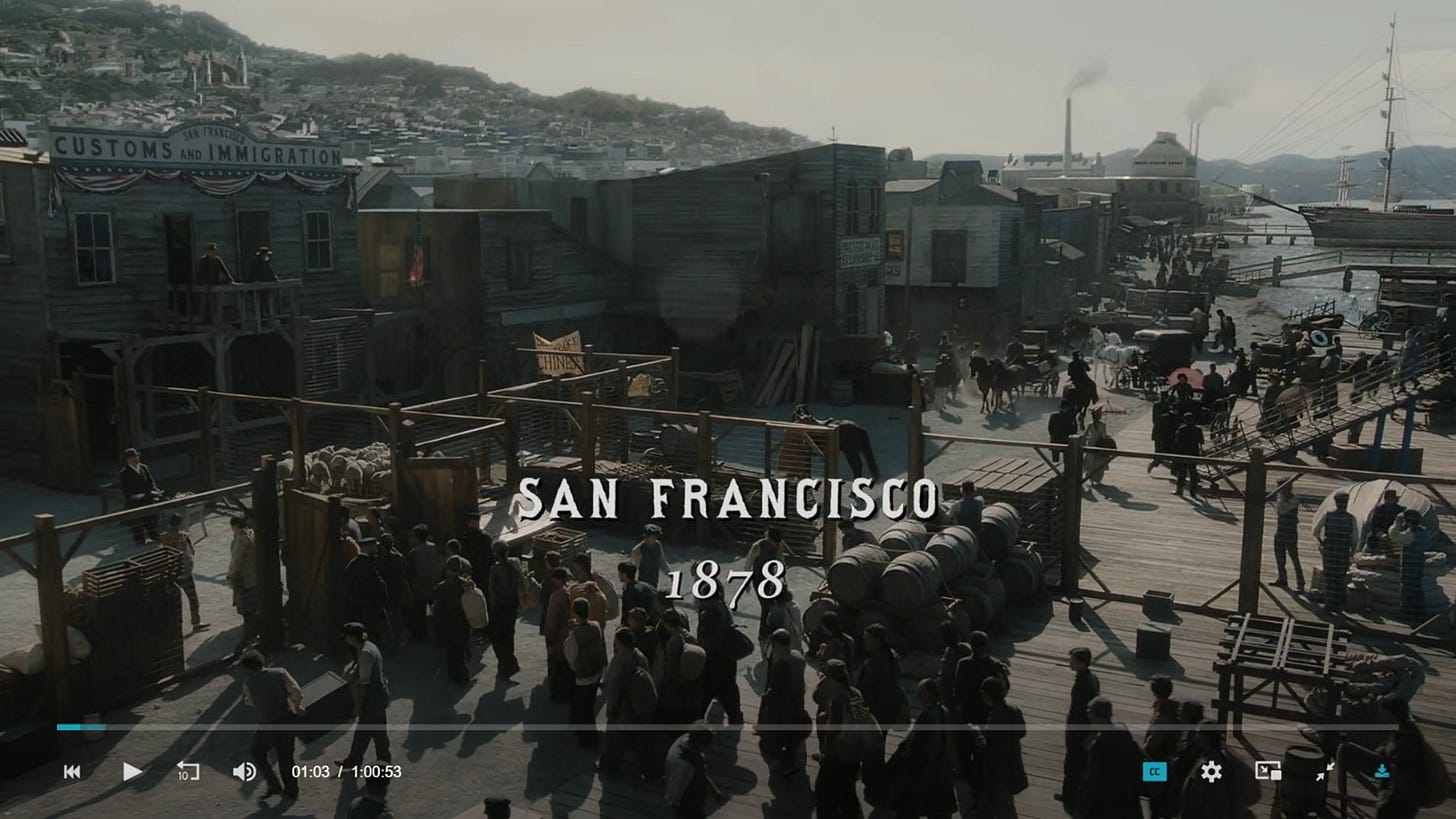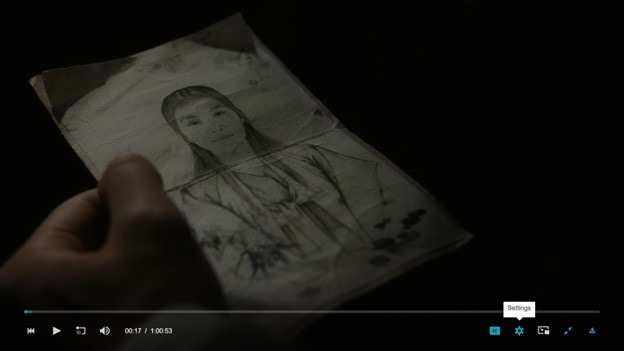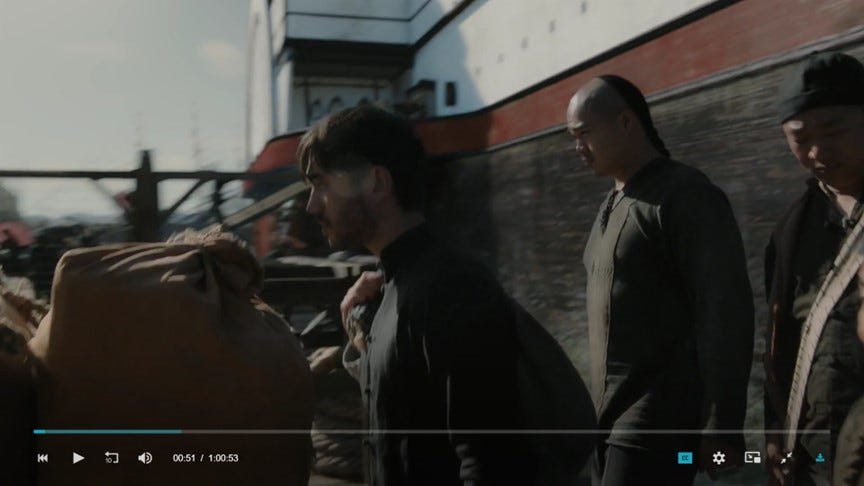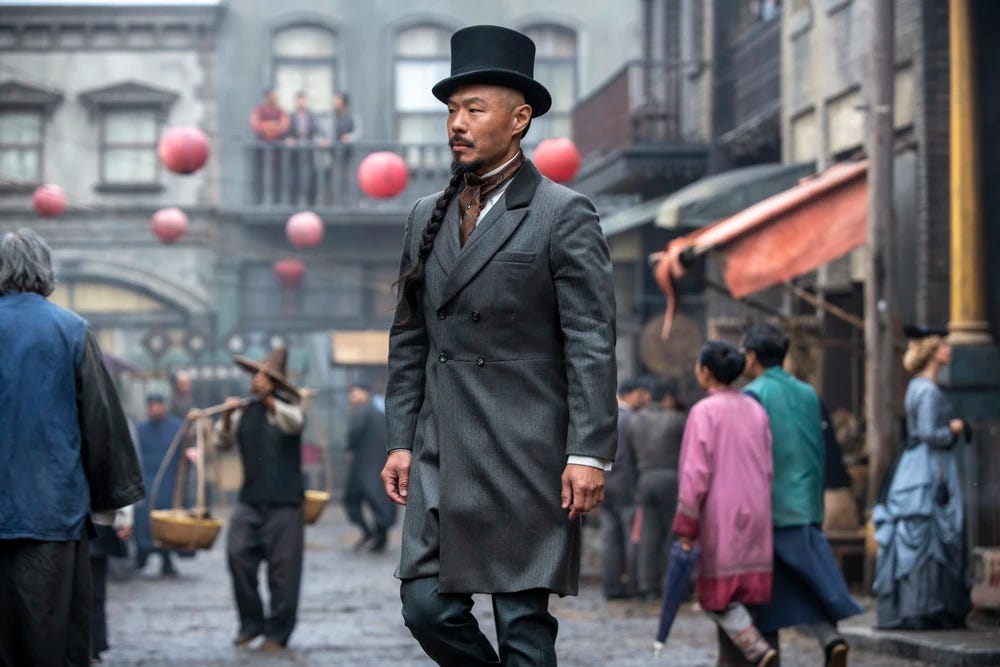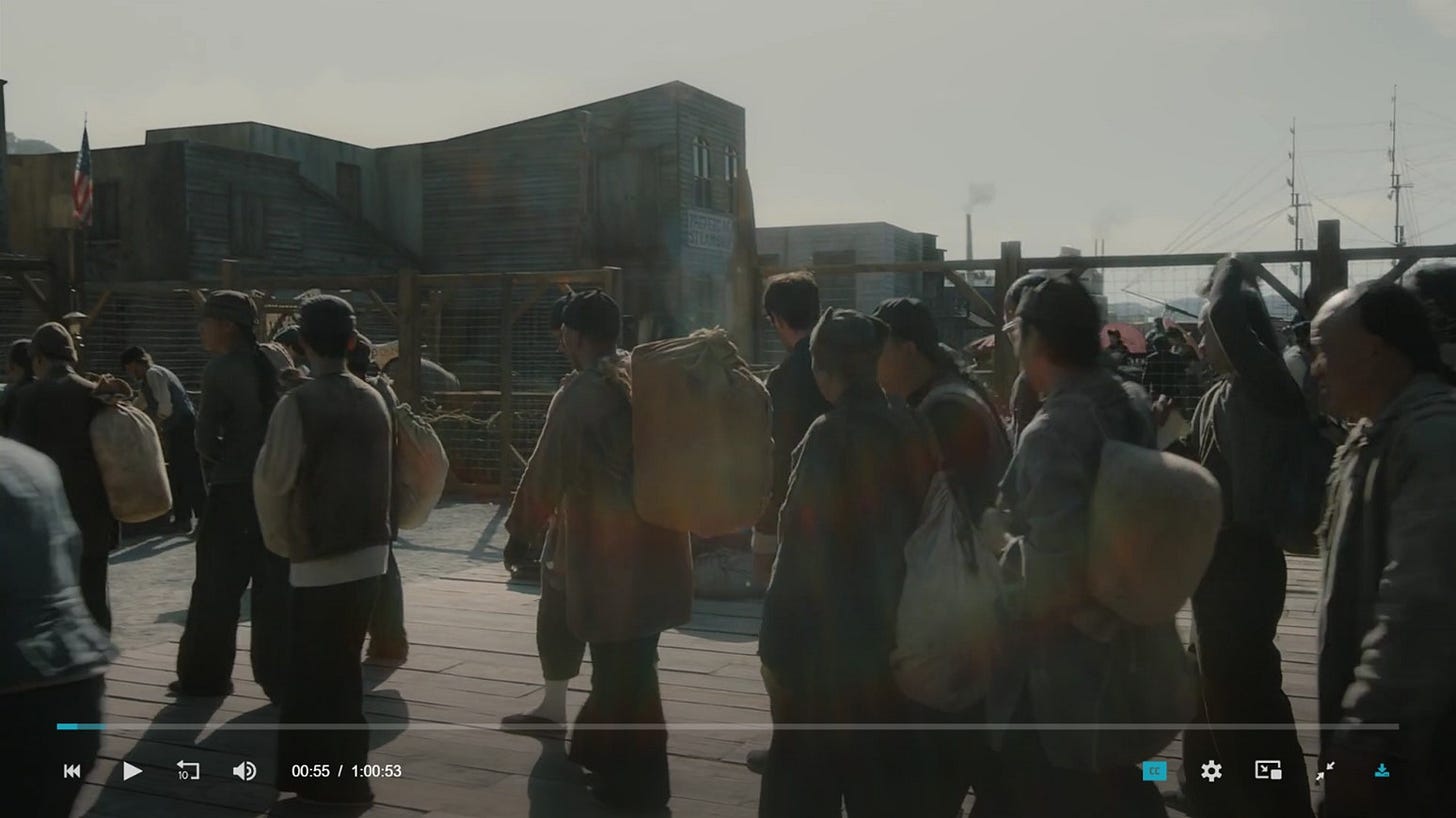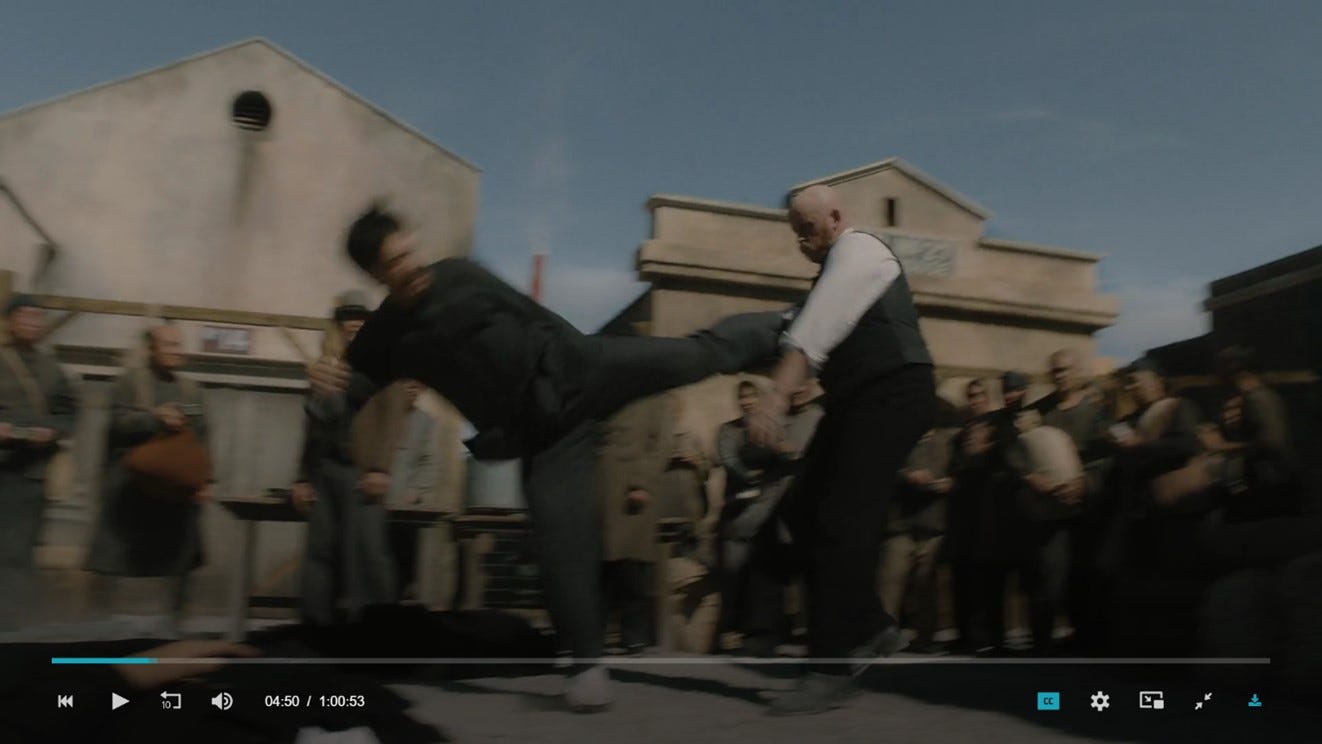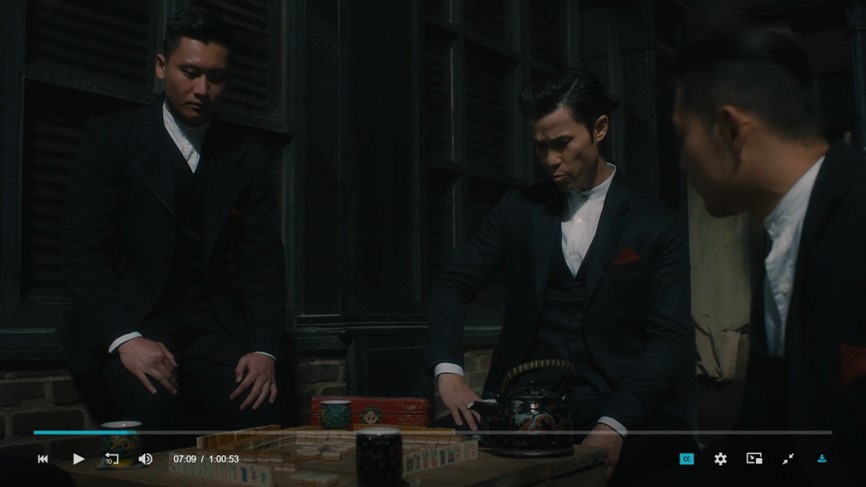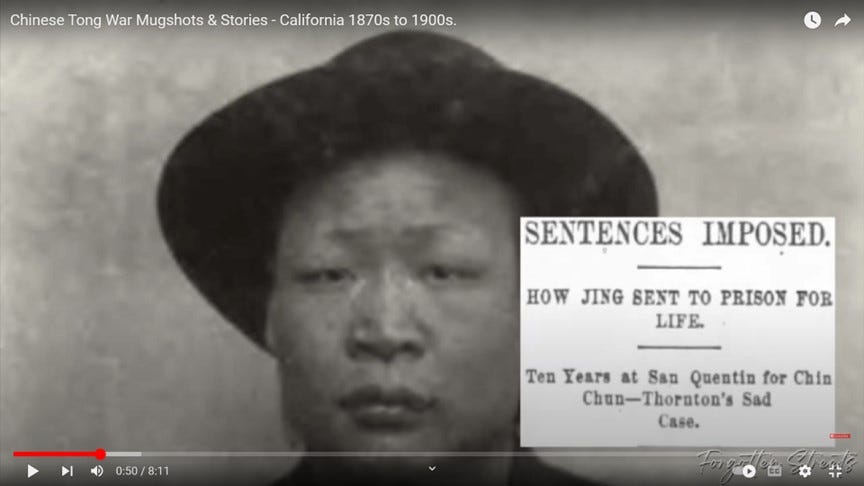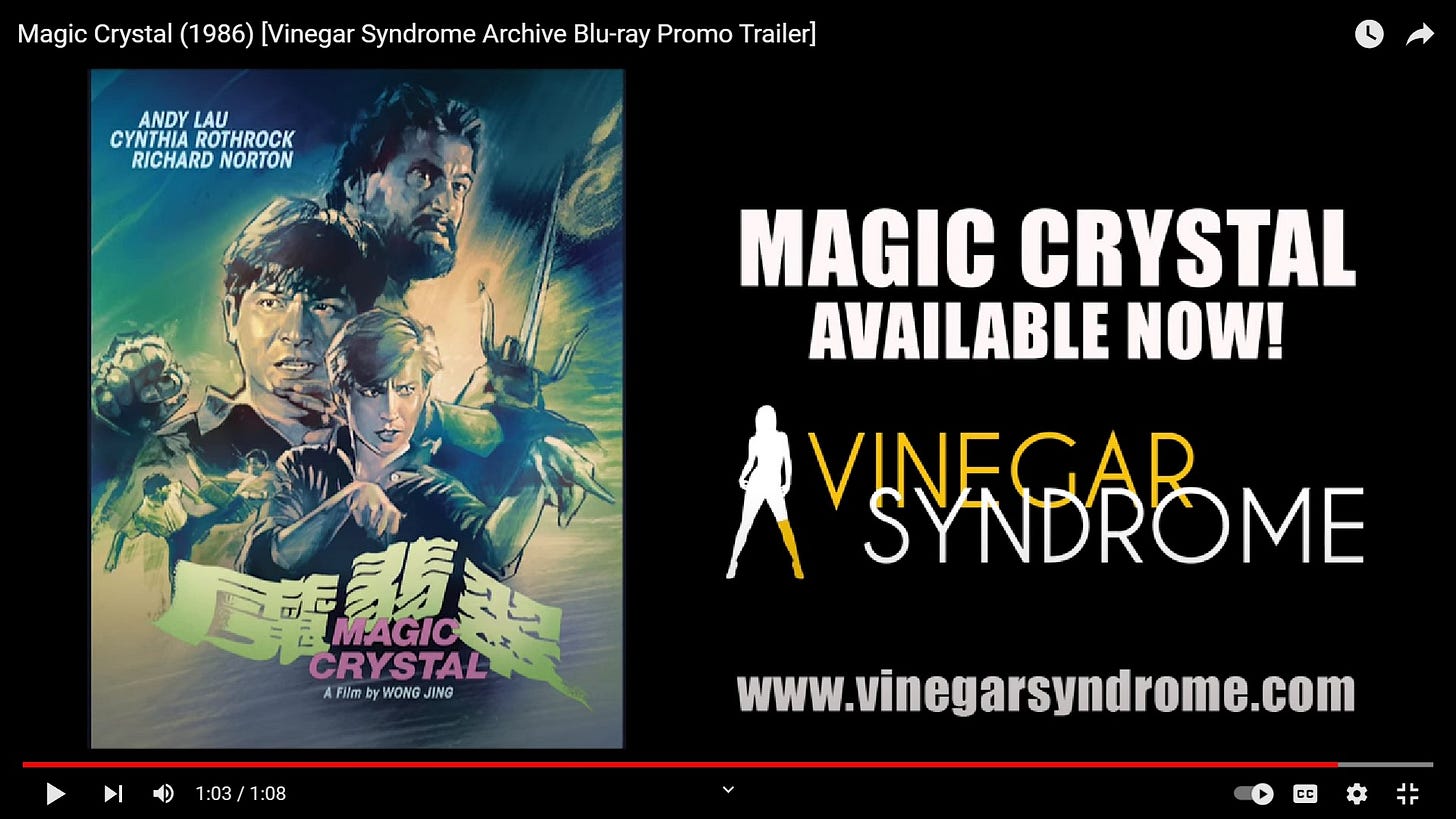Warrior TV Show --fact checking the first 10 minutes
Based on real history, loosely . . .
Greetings, Welcome back. This time I focus on a subject I have been promising for a long time, dissecting the Cinemax / HBO TV show “Warrior” for historical accuracies. But that proved too big a task so I am only focusing on the historical errors in the first ten minutes of the first episode.
Having said that, it’s really not a bad show at all, if you are in the mood for a hyper-violent, martial arts, gangster serial — you just have to turn off certain parts of your brain to enjoy it, and understand that despite the advertising it is not a historical documentary and was not intended as one.
Coming in the future, I am closer to finishing a piece on opium and opium smuggling in the old American West, but my research is only about a third done. I have the start of a good piece on Ashida Kim, the popular yet notorious ninja author and why are his strange works so successful? And I am hoping to write a piece on Chinese language and why is the spelling so seemingly irregular or strange (a friend asked) and another on what does the term “five elements” refer to and why do I hate that translation of the original term ( the Wu Xing or 五行 ) so much? I can feel that eventually another piece on the chaos and human tragedies that are on-going in the so-called “Golden Triangle” and fringes of Burma is coming up too.
Stay tuned, and please keep following us and reading what we offer. Please remember, it’s wonderful if you share this with your friends or on social media.
Back in 2019, Cinemax decided to release something different. Their new TV show Warrior was advertised as based on not just on Bruce Lee’s dream project but also on real-life, Chinese-American history. “Warrior,” it was said, was based on the little-known history of the San Francisco Tong Wars of the late nineteenth and early twentieth centuries. It was aimed at a contemporary audience, and it was intended to be edgy, exciting, and showcase racially Asian actors in roles like they had never been seen in before while exposing viewers to a new and little discussed part of American history.
Edgy? Well, it definitely pushed the envelope off into “hard R rating” zone. Even before the titles hit the screen we were given warnings for : 1 Graphic Violence, 2. Nudity, 3. Strong Sexual Content, 4. Adult Content, and, of course, 5. Adult Language. And, make no doubt about it, the shows keeps all these promises.
In fact, be aware, that not only does the show contain a lot of racially charged language and crude, racial slurs, but when I write about the show, I will at times be discussing this language, its usage, and therefore including these words.
It’s also exciting, and it definitely showcases a lot of racially Asian actors and actresses, including Asian American, Asian British, Asian Canadian, Asian African, and even an Indonesian, among others. And it is an exciting show. Honestly, at times, too exciting, and I found myself taken out of the show thinking “Wow! The stunt people must be having a field day making this,” and laughing at scenes that were not supposed to be funny, because they were just so over the top.
Now I’m not saying I don’t like the show. I do, however, have to be in a certain mood to watch it, and sometimes I need a break to get in the proper frame of mind for it all. And while I love Westerns, it’s really much more of a violent, martial arts, gangster serial.
And the diversity / racial representation thing needs to get some mention. It’s nice to see a lot of these little seen, young, up and coming actors and actresses getting their opportunity to show off their talents.
But enough of my feelings. Let’s get back to the history.
And be forewarned there are spoilers throughout –On the other hand, we are only looking at the first ten minutes of the show anyway.
And now the show begins,
and with it the historical inaccuracies
One of the first things we see is a man’s hand holding this drawing. The hand belongs to our main protagonist, Ah Sahm.
Obviously, the drawing is a picture of a woman. SPOILERS: Ah Sahm has come to America to look for her.
But to me, this does not look like a Chinese drawing from the late 19th Century. They style, the shading, is very Western.
So I am going to declare this historical innaccuracy number one, and it’s less than half a minute into the show.
To show what I mean, I am offering a pair of Chinese drawings from the Qing Dynasty (1644-1911) showing ordinary women. Compare the stylistic differences.
I’m not an art history guy and can’t really name what they are, but this is definitely a different style of drawing.
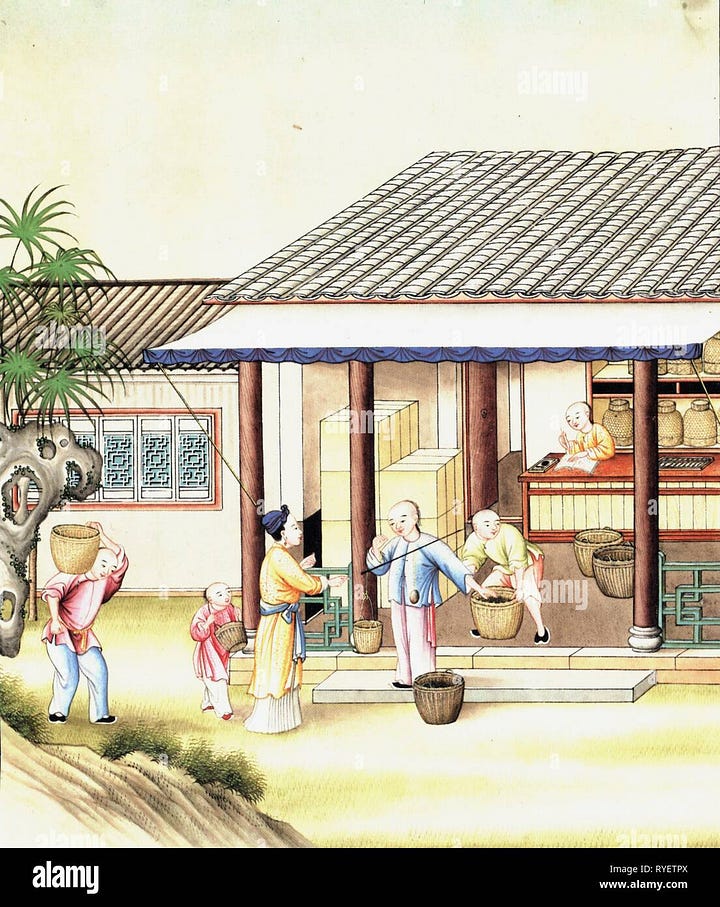
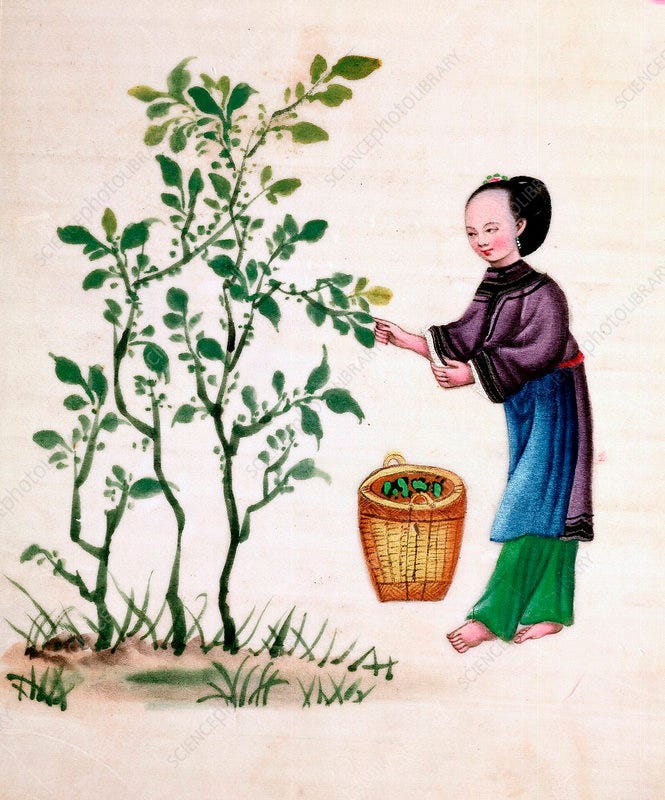
Hairstyles and Queues
Second thing that jumped out at me was the hair styles. During this time, Chinese men universally wore their hair in a unique style with the front of their forehead shaved and a long pony tail, called a “queue,” hanging down the back. They hated to have it cut off or removed so it wasn’t something they casually discarded when they entered a new country.
Now while some day I will have to write an entire piece on this, the origins of the style are interesting. In the 17th Century, China was conquered by the Manchus a coalition of horse nomad tribes from the north and northeast of China.
The 17th Century Manchus were not very nice to the Chinese and basically after conquest, said to them “We own your ass just like we own all our horses. And to remind everyone everywhere that we own you like we own a horse, we want you to have a little horse tail on your head.”
And thus the Chinese were forced to have this queue. But, in Chinese fashion, they became very proud of having this queue and kept it even when outside the control of the Manchus, even when living in the USA.
But look at the picture below. (Text continues below picture)
The guy in the front, handsome guy who also needs a shave, that’s Ah Sahm, the hero of this entire TV series.
Where’s his queue? No one knows. The entire thing is never addressed or discussed.
I mean the guy behind him, a nobody, an extra on the show who never speaks and has no name, has one, but Ah Sahm does not.
In fact, with only one exception, the character Wang Chao, who is sort of portrayed as the shadowy, shifty intermediary between the Chinese and the greater White society, virtually none of the significant characters have a queue but many of the faceless, nameless nobodies who wander around in the background of the show do.
(I think Wang Chao looks cool with his queue and his top hat and suit coat. He’s one of my favorite characters on the show.)
That’s less than one minute into the show.
“Chinks go home!” (apologies, it’s offensive and all, but is it historically correct?)
As Ah Sahm enters the City of San Francisco, and marches down a gangplank from his ship into the fenced off immigration yard, angry mobs of large White men stand outside the fence chanting “Chinks go home! Chinks go home!”
Now “Chink” in this context is an offensive racial slur, and I apologize for using it. However, was it widely used or used at all in such a way in the year 1878 in San Francisco?
Well, it didn’t sound right to me. It’s most certainly not a term that I have seen when reading period descriptions and first person accounts of what the local Whites thought about the Chinese at the time.
So I looked into it and discovered that it seems the term really shouldn’t be used here in this time and place.
According to the souces I found, and there is controversy, the term “Chink” as a racial slur arose in either the 1880s or 1901, depending on which source you select.
See:
https://www.etymonline.com/word/chink
https://en.wikipedia.org/wiki/Chink
https://www.oed.com/dictionary/chink_n5?tl=true
Beating the Immigration Bulls
At this point, we are about four minutes into the show, much of this spent listening to Wang Chao give a welcome speech to the Chinese immigrants. He then connects them with jobs, taking commissions for the service.
Ah Sahm comes down the gangplank and three large White men in blue uniforms, obviously immigration officials, are bullying the recently arrived Chinese and trying to humiliate them.
This is made easier by the fact that most of these new arrivals do not speak English, and therefore they can’t really understand the verbal abuse these officials, later called “immigration bulls,” are heaping on them.
Ah Sahm catches their attention and the three of them begin calling him names. Ah Sahm responds in English, causing them to feign surprise, laugh, and hurl abuse and call him a “Chink.” (there’s that word again)
Ah Sahm responds very coolly calling them “Fat White fucks.” (FYI, I spent ten minutes googling trying to determine if the use of the word “fucks” in this context was historically correct or not and did not get a solid, authoritative answer. I doubt it, but it could be. Regardless, it does not sound like something someone who just got off a boat from China would say even if he does speak fluent English. )
Well, soon we get a peek at what kind of show this is.
SPOILERS!!!
Ah Sahm kicks their ass, dropping the two “smaller” guys with one punch each, Wham! Bam! drop drop. (Smaller here is relative, as they are both bigger than him)
Next a real fight develops between him and the largest one. Blows are exchanged. Ah Sahm and the largest immigration bull swirl around, and ultimately with a mighty, flying kick Ah Sahm drops him too.
Okay, I’ve got to comment. First, it’s obvious this Chinese guy from 1878 is using Korean Tae Kwon Do kicks that were first known to be put in organized martial arts in the mid twentieth century.
Okay, it bugged me the first time I saw it, but, really, who cares? I mean, who cares except for me? It’s an exciting TV kung fu / martial arts fight and this show delivers lots of them. If you like martial arts fighting action, consider watching this show as there are many.
BUT, wah! wah! —the fighting styles are not authentically connected with this time and place and really should not be happening this way.
SECOND COMMENT - AND MORE SPOILERS
Okay, if you are going to give me a scene where a Chinese guy in the late 19th Century beats up an American government official in plain view of not just a large quantity of Chinese arriving off of boats, but also other government officials, and a mob of of White, racist thugs yelling anti-Chinese racial slurs just outside the fence, well, you’ve got to follow this up with at least a manhunt for him after he escapes and I don’t think a real, full blown race riot would be out of place either.
However, no one seems to mention this incident again except Wang Chao when he mentions what happened to the members of the Hop Wei Tong in the next scene. —and despite being a clever guy, does Wang Chao say “Hey, this hot-head here almost caused a race riot and got us all killed”? No, Wang Chao thinks it’s pretty cool, and tell the members of the Hop Wei Tong how impressed he was by it all.
“Warrior” is the kind of show, in short, where action is more important than logic.
Okay, so be it. Message received and understood.
The Appearance of the Tong Members
Wang Chao and Ah Sahm are in a fancy carriage heading through the streets of San Francisco.
He asks Ah Sahm where he learned English and Ah Sahm explains his grandfather was American.
(So apparently his grandfather was the one who taught him to call people “Fat White Fucks”? Okay. Got it.)
Now at this point, I am doing some weird thinking. According to Shannon Lee and the publicity materials, this show is supposed to be what her father, Bruce Lee, originally envisioned for the show that became the 1970s show “Kung Fu.” In this 1970s show we had a White Guy named “David Carradine” (star of the classic film Deathrace 2000, of course) who portrayed a half-Asian, half-Caucasian Shaolin monk wandering the old American West.
So we have a full blooded Caucasian playing a character who is half Asian. That’s half wrong, 50% wrong, just saying.
Now Ah Sahm is portrayed by an actor named “Andrew Koji.” Andrew Koji’s mother is a White British woman and his father was Japanese. (He was raised in the UK, by the way). He is half racially Asian and half Caucasian.
So we have an actor who is 50% racially Asian now playing a character who is 7/8 or 87.5% percent Asian. That’s 37.5% wrong. But it’s closer.
However, I think that it implies that if there is a third version of this show’s concept say 50 years from now (as it’s been 50 years since Kung Fu aired roughly) and they cast a fully Asian actor as the lead hero who wanders the old American West using his martial arts skills, will the character have to be something like 112% racially Asian to follow this pattern? Does that follow? Am I making sense here?
Just asking.
But regardless look at these guys below. These are the members of the Hop Wei Tong. Throughout the show you can easily recognize the members of the Hop Wei Tong as they all wear suit coats and white shirts like this.
Now this is completely historically wrong. No Tong dressed like this.
And notice the hairstyles. No queues. Yet Tong members wore queues and the authorities occasionally toyed with things like ordinances requiring that everyone jailed be given a hair cut which while not official racist, bothered the Chinese prisoners much worse than any other as they did not want to lose their queues. Just saying.
And despite the cinematic appeal of having each of the gangs dressing differently, it’s a pure cinematic, television construction and not a historical one.
If you would like to see what real Tong members look like, someone was good enough to take a lot of 19th Century Tong mug shots and turn them into a YouTube video.
Forgotten Streets -- Chinese Tong War Mugshots & Stories - California 1870s to 1900s.
“He’s an onion!"
--crazy Warrior TV show slang.
Finally, we have some of the crazy gang slang, particularly when the Hop Wei Tong members start referring to Ah Sahm as “an onion.” Now there’s a lot about this subject that I don’t know, but I’d never heard that expression or term in this context before, and it made me wonder.
Where did it come from?
Turns out the writers and producers simply invented it. In fact, they fully admit they conscioiusly invented English language gang slang for the tongs in the TV show. And, not just that, it was a conscious and carefully thought out decision to have the Asian characters speaking modern, contemporary English while all the White actors and characters were speaking English circa 1870.
For details see the article below:
'Warrior' Gives Viewers a "Universal Translator" in 19th Century Chinatown
As the article says:
“When it comes to Cantonese, there’s certain words that don’t have a perfect translation,” says Lin. “We decided to have fun and create our own slang.”
As a result, the Tongs in Warrior have a vocabulary of slang that isn’t accurate to how real-life Tongs actually spoke. The biggest example is how the Tongs call whites, in derogatory fashion, “ducks,” and white neighborhoods “ponds.”
So that’s the first ten minutes of the first episode of Warrior and a check for historical accuracy.
Obviously, it deserves credit for increasing awareness of the diversity of people, many long ignored, whose diverse experiences helped shape the Old American West and through that came to help shape the modern USA.
And, in fairness, if we compare this to other Westerns (although it is more of a gangster thing really, I think), if we compare this to other Westerns, it really is no worse in terms of historical accuracy than say Bonanza. I mean, I love the old show “Have Gun Will Travel.” I really do, but how many real life gunfighters quoted Shakespeare like the show’s hero, known only as “Paladin.” (Quick answer, not enough, more people should quote Shakespeare. I wish I could do it well. So cool.)
Enjoy it for what it is, and more power to you. However, if you consider the show a history lesson, well, hate to be the one to tell you, that’s not what it was intended to be at all.
Peace and enjoy the show. Someday I will return with a follow up to this episode, Ishl Allah, as they say.
Scattered News and Information Pieces from Around the Web
Come on guys. It’s okay to click on these links. Really it is.
Again, a random sampling of cool stuff related somehow to Asian history ( mostly)
Movies
I saw two movies recently that should be mentioned. One on a big screen, one on blu-ray home viewing.
First, “Enter the Clones of Bruce Lee” is a documentary about “Brucesploitation” films. Bruce Lee died young, at the peak of his popularity, and under mysterious circumstances. The reaction from around the world was intense and at time overwhelming. Heck, I even wrote about it a couple months ago ( see Dim Mak and the Death of Bruce Lee ) Not surprisingly, there was a demand for even more Bruce Lee movies, and, despite the death of Bruce Lee himself, several companies produced imitation Bruce Lee films starring actors given stage names like Bruce Le, Bruce Li, Bruce Lo, Dragon Lee, and Bruce Leung, Leung being the spelling of the word for “dragon” in Mandarin. This entertaining and well done documentary tells the story of these fascinating films. (I saw it at Proctors Theater in Schenectady, should anyone wonder. They show some awesome films.)
Enter the Clones of Bruce Lee --documentary trailer
Vinegar Syndrome is an American company that specializes in high quality releases of not-necessarilly high quality films from a few decades ago. They release a wide variety of films this way, aimed at collectors of b-movies and exploitation films and such, and among their offerings are several of Cynthia Rothrocks films, mostly from the 1980s.
For those who don’t know, in the 1980s Cynthia Rothrock was an American woman who was well known in martial arts circles as one of the top forms competitors in the nation. Because of this she was invited to go to Hong Kong and work in martial arts actions films there, and after that she came back to the USA and made films on her own here. “The Magic Crystal” was one of her early films.
Okay, honestly, “The Magic Crystal” was just a bit too silly and random for my taste, and I felt my time could have been better spent. Now, I am not saying it’s awful, even if it is kind of silly and dumb. If you have more free time than I do, well, you might find it a worthwhile way to relax for an hour and a half. So much for the film itself.
What I do recommend though is that you try to check out the extras that come with the blu-ray if you gt a chance. There’s an excellent, new interview with Cynthia Rothrock where I learned several new things about how films were made in Hong Kong in this era and an interview with the now grown child actor who starred in the film. Again, I learned things. Learning is good. If you want to learn more things subscribe to this publication. Send it to your friends.
The Magic Crystal -1986 -released by Vinegar Syndrome
Food and Food History
FYI, in case you didn’t know, American style egg rolls are not authentic Chinese food. Now I love them. I really do. Especially with some of that equally inauthentic hot Chinese mustard from the little plastic packs, but they are not authentic Chinese food. In fact, when my friend Bill Marcus (RIP), a radio journalist with 10 years experience working in Shanghai, and I went to our favorite Chinese restaurant in Arlington, Massachusetts, we always got a kick out of the way the Chinese characters on the menu always described “Egg rolls” in Chinese as
”Mei shi Chun Juan” / 美式春卷 or “American style egg rolls.”
So, where did they come from? Watch this YouTube video and learn. Learning stuff is good.
American Chinese Food Show - Who Really Invented Chinese Egg Rolls?
Current Events — a Sampling, nothing more
I am going to let you guys do your own research this week. i’ve been looking to several interesting things.
First, the authorities in the Philipines think they have identified Mayor Alice Guo, the mysterious and shady mayor of Bamban where hundreds of people from several nations were held against their will and forced to make scam calls. Reports are that charges of human trafficking are likely to soon be pressed. An editorial in the Philipines also reminds readers that while Alice Guo has been coming to hearings with expensive clothes and accessories, she should not be admired for her sense of fasion, quite the opposite.
Similarly Tom Calarco, author of several books on the underground railroad in the USA and its history, sent me a fascinating article from the Washington Post on happenings in Kokang, a city that is on the Burmese side of the border between Burma and Yunnan province in China in the Shan State, homeland of the Shan ethnic group but also home to many Chinese who have lived there since before the modern border was drawn. For years the authorities in China and Yunnan, China, worked with the Chinese families that ran scam phone centers in Kokang, but then cracked down on them as the current war in Burma has caused alliances between the pan-ethnic, pro-democratic forces and the Chinese government to close these terrible places and punish the people who profit from them.
It’s tied in with the same issue, I wrote about last week, fuzzy borders and lawless territories that allow large scale behaviors that defy international norms and laws. While in the 1980s and 1990s, this was the home of Khun Sa (RIP), the notorious half Chinese - half Shan drug warlord, now it seems to be home to things like scam phone centers —although the Chinese authorities and the anti-junta, pan ethnic Burmese rebel coalition, have combined forces to close them down and punish those running them.
I believe, and don’t quote me on this as I need to do more work, that the opium growing in the region is largely stopped and has been replaced with trade in chemically based illegal drugs such as amphetamines that are produced in the same lawless or semi-lawless regions.
It’s a chaotic and fluid situation and very complex and interesting to look into although the widespread human suffering and human exploitation involved is depressing.
And those artificial islands in the South China Sea
As people should know, although many do not, the South China Sea is currently one of the world’s hot spots. South of China, east of Vietnam, southwest of Taiwan and Japan and north and north east of the Philipines, there are ongoing disputes over who actually owns and controls this important sea territory.
China insists it is its historical territory and that they have a legitimate historical claim to the territory, although few other nations if any agree with them on this. (some day, some day I must write on this.)
To attempt to solidify their hold on the region, the Chinese for years have been building artificial islands in the South China Sea and thereby, like the board game Go (also known as weiqi or paduk) making it harder for other nations to oust them from this piece of ocean.
Well this week, I learned that the Vietnamese also have an artificial island program in this region and are building and developing their own artificial islands in the region so that they too can have a stronger claim on it. Oh my!
We will have to wait and see what happens.
https://www.rfa.org/english/news/southchinasea/island-building-06112024045556.html
And with that in mind, please feel free to share this with friends or interested parties and repost it on social media. Please feel free to leave comments and if you wish and can afford it, consider a paid subscription to support this publication.


